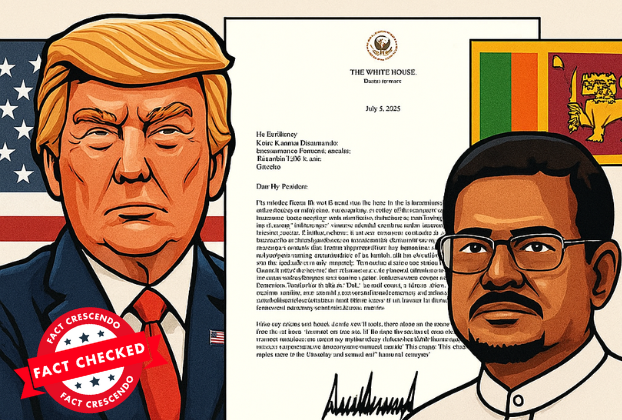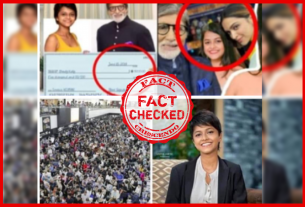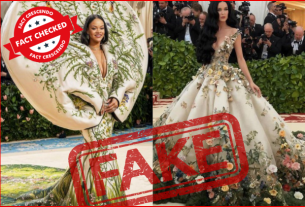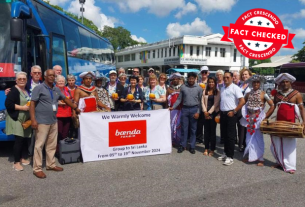Subscribe to our WhatsApp Channel
In a move to reduce the trade deficit with the US, President Donald Trump has been announcing new tariff percentages for many countries that import goods into the US. In this background, a letter addressed to Sri Lankan President Anura Kumara Dissanayake has been widely shared, which talks about the new proposed tariff rate for Sri Lanka.
While this fueled many discussions on the impact of negotiations the current government has had with the US, some social media users have implied that the letter sent by Trump to the SL president is not authentic, referring to a ChatGPT response as proof. We decided to fact-check the claim and examine whether the document is genuine.
Social Media Posts :
A social media user claims that the letter circulating online, allegedly from U.S. President Donald Trump to Sri Lankan President Anura Kumara Dissanayake, is fake. The user also cites ChatGPT as a reference, stating that the AI tool itself identified the letter as likely inauthentic.
Similarly, other social media users have questioned the authenticity of this letter, highlighting the incorrect spelling of the Sri Lankan president’s name in the purported letter by the US president, as seen below.
Fact-Check:
Trump’s Global Tariff Push
U.S. President Donald Trump has launched a new trade campaign targeting dozens of countries with hefty tariffs unless they renegotiate bilateral trade agreements with the United States. On Sunday, he announced that around a dozen official letters would be sent out to world leaders, warning them that existing U.S. tariffs would be reinstated or increased if new deals weren’t in place by August 1, 2025.
Just one day later, on Monday, Trump began posting full screenshots of these letters on his Truth Social account. The letters, signed personally by him, were presented as official notices of U.S. trade intentions, but they quickly became the subject of online criticism and media coverage for more than just their content. You can read mainstream media reports on this here, here and here.
Grammar Errors, Typos & Missteps Go Viral
President Trump’s tariff letters quickly drew criticism on social media not just for their content, but for their unusual tone, grammatical mistakes, and factual slip-ups. Many users pointed out that the letters lacked the polished, formal language typically expected in official diplomatic communication.
One widely circulated example involved Trump’s letter to Željka Cvijanović, the Chairwoman of the Presidency of Bosnia and Herzegovina. While the letter respectfully referred to her as “Her Excellency,” it confusingly opened with the salutation “Dear Mr. President,” misgendering the recipient entirely.
A similar issue appeared in Trump’s letter to Sri Lanka. The first version of the letter addressed President Anura Kumara Dissanayake as “Aruna”, a typo that immediately raised red flags online.
Some social media users questioned the authenticity of the letter, citing the misspelt name and a few other basic mistakes.
However, Trump later reposted a corrected version, confirming it was a genuine communication.
Despite the corrections, critics have pointed out that these errors, combined with the blunt and informal language, are highly uncharacteristic of White House correspondence, adding to public skepticism and mockery. View the media coverage in detail here, here ,here , here and here.
Countries Targeted and Tariff Rates Announced
Sri Lanka is not the only country facing this wave of increased U.S. tariffs.
Earlier this week, President Trump unveiled a new batch of tariff letters directed at seven more nations, escalating what he described as a “total overhaul” of international trade arrangements. According to the letters again shared via Truth Social, tariffs will be imposed as follows:
Sri Lanka, Algeria, Iraq, and Libya: 30% flat tariff on all exports to the U.S.
Brunei and Moldova: 25% tariff
Philippines: 20% tariff
In his letter to Sri Lanka, Trump specifically wrote:
Starting on August 1, 2025, we will charge Sri Lanka a tariff of only 30 per cent on any Sri Lankan products sent into the United States, separate from all sectoral tariffs. Goods transhipped to evade a higher tariff will be subject to that higher tariff.”
In a separate Truth Social post on Tuesday, Trump said more letters were on the way, writing:
“We will be releasing a minimum of 7 countries having to do with trade, tomorrow morning, with an additional number of countries being released in the afternoon.”
So far, the countries affected by these tariff decisions span Asia, Africa, and Eastern Europe. Here’s a summary of some key rates already announced in earlier rounds:
Japan, South Korea, Malaysia, Kazakhstan, Tunisia – 25%
EU, Mexico, South Africa, Bosnia and Herzegovina – 30%
Indonesia – 32%
Bangladesh, Serbia – 35%
Thailand, Cambodia – 36%
Myanmar, Laos – 40% (the highest announced so far)
As of now, only the United Kingdom, China, and Vietnam have successfully finalised new trade agreements with the United States under this initiative.
Here are two reports that explain it further: Link 1 | Link 2
Why Some Thought the Letter Was Fake
As part of the verification process, we also used ChatGPT to analyse the document. Based on the tone, grammar, and structure, ChatGPT initially flagged the letter as likely fake. It noted:
Informal and overly aggressive language
Grammar errors and random capitalizations
Phrasing that doesn’t match typical White House diplomatic style
Initial spelling error in the President’s name (“Aruna” instead of “Anura”)
However, as we confirmed through further investigation, these stylistic issues alone do not prove the letter is fake. Once traced back to the source, Trump’s verified Truth Social account, the letter’s authenticity was verified.
This example highlights why AI assessments should always be paired with real-world source verification, especially when dealing with political or international current affairs.
Join us to learn about our investigative reporting.
Facebook | Twitter | Instagram | Google News | TikTok |Youtube
Conclusion :
Despite initial doubts and claims of forgery, some even citing AI tools like ChatGPT, the letter from U.S. President Donald Trump to Sri Lankan President Anura Kumara Dissanayake is authentic. It was publicly shared on Trump’s verified Truth Social account as part of a broader international trade campaign.
While the letter contains grammatical errors, an initial typo in the Sri Lankan President’s name, and informal language that sparked online criticism, these issues do not indicate that the letter is fake. Similar errors appeared in several other letters sent to world leaders, which Trump himself also published.
This fact-check highlights the importance of verifying a document’s source and context rather than relying solely on language style or AI-based assumptions. Misjudging official content based on tone or typos without checking the original publication can lead to misleading claims.
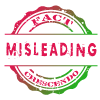
Title:Trump’s Tariff Letter to Sri Lanka: Real or Fake?
Fact Check By: Fact Crescendo TeamResult: Misleading



